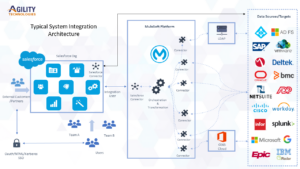During times of increased contact volume, no one wants to be left on hold for more than a few minutes. One way to help customer support agents assist as many customers as possible is to automate routine tasks and processes. Automation frees up agents’ time to focus entirely on the customer and their needs, rather than scribbling notes and searching for information.
In this blog, we’ll explore how service teams can use automation to scale support quickly.
1. Make self-service channels work harder
Self-service alleviates the burden on agents during times of higher-than-normal contact volumes. But according to Gartner, while 70% of customers use self-service channels in their resolution journey, only 9% can resolve their issue.
That’s where automation comes in. Artificial intelligence (AI) analyzes search behaviors and surfaces the most frequently searched questions at the top of your help center or knowledge base. So, if the majority of your customers are looking for information associated with COVID-19, get them what they need right away.
Chatbots and automation also go hand-in-hand. Customers connect with chatbots for direct support for common questions. If a case requires a live agent, chatbots collect customer data. They share it with the agent so that they have everything they need to resolve the case quickly — without asking the customer to repeat information.
Sun Basket, a subscription meal kit delivery service featuring organic and sustainable ingredients, is addressing the sudden increase in customers and service volumes with Einstein Bots. “We’re using automation and self-service to provide answers to customers quickly and to manage rising support volumes,” says Brett Frazer, head of the customer service. “It’s been a huge help to ensure a smooth transition to service from home for our agents.”
Self-service goes a step further when you connect chatbots with your knowledge base.
Watch how to pair chatbots with your knowledge articles in the video below for a better self-service experience for your customers:
2. Automate case classification
The majority of service leaders (56%) are already exploring ways to use AI, according to the “State of Service.” In a time of crisis, one of the best ways to use AI is for case classification.
Predictive intelligence recommends or populates field values based on past customer data. The algorithms adjust to make predictions, so agents spend less time scrolling through picklists and searching for the right data values. This means cases are automatically classified based on history and trends. Cases are also routed to the right agent based on skill set, reducing wait times, and leading to faster resolutions.
On-demand healthcare staffing company connectRN is creating new case rules daily to distribute cases based on email subject lines and automated SMS responses using Mercury SMS. “This allows my team to focus on supporting our nurses and facilities with care and concern instead of spending energy chasing down information, reassigning cases, or trolling through excess noise,” says Julie ODonnell, team lead for customer success.
To learn more about how to set up automated case classification, check out this Trailhead tutorial for Einstein Case Classification.
3. Improve case handle time with macros
Once cases route, automatically apply macros with a single click.
Macros are a set of instructions that communicate with your service solution to complete a task. Macros take repetitive steps (e.g., adding a note, sending an email, closing out a case) or specific steps (e.g., applying for a loan, request a refund) and automate each instruction. To start with macros, prioritize one or two processes most valuable to customers or most repeated by your agents that require the lowest level of effort to build. Start small and add on as you go. For detailed directions on how to set up and manage macros, review this community macro help article.
In this video, we show how to add a macro to your platform applications, build, and run one. The video also demonstrates how to run macros on multiple cases at once — a super time-saver!
Automate now, save time later
Automation helps your greatest asset, your team, handles more complex cases, and serve customers with empathy. You save your agents countless hours of asking repetitive questions, and your customers no longer hear “please hold” again.
*** This was originally posted by Patrick Beyries on May 12, 2020 on Salesforce Blog. To see the original post click this link.

